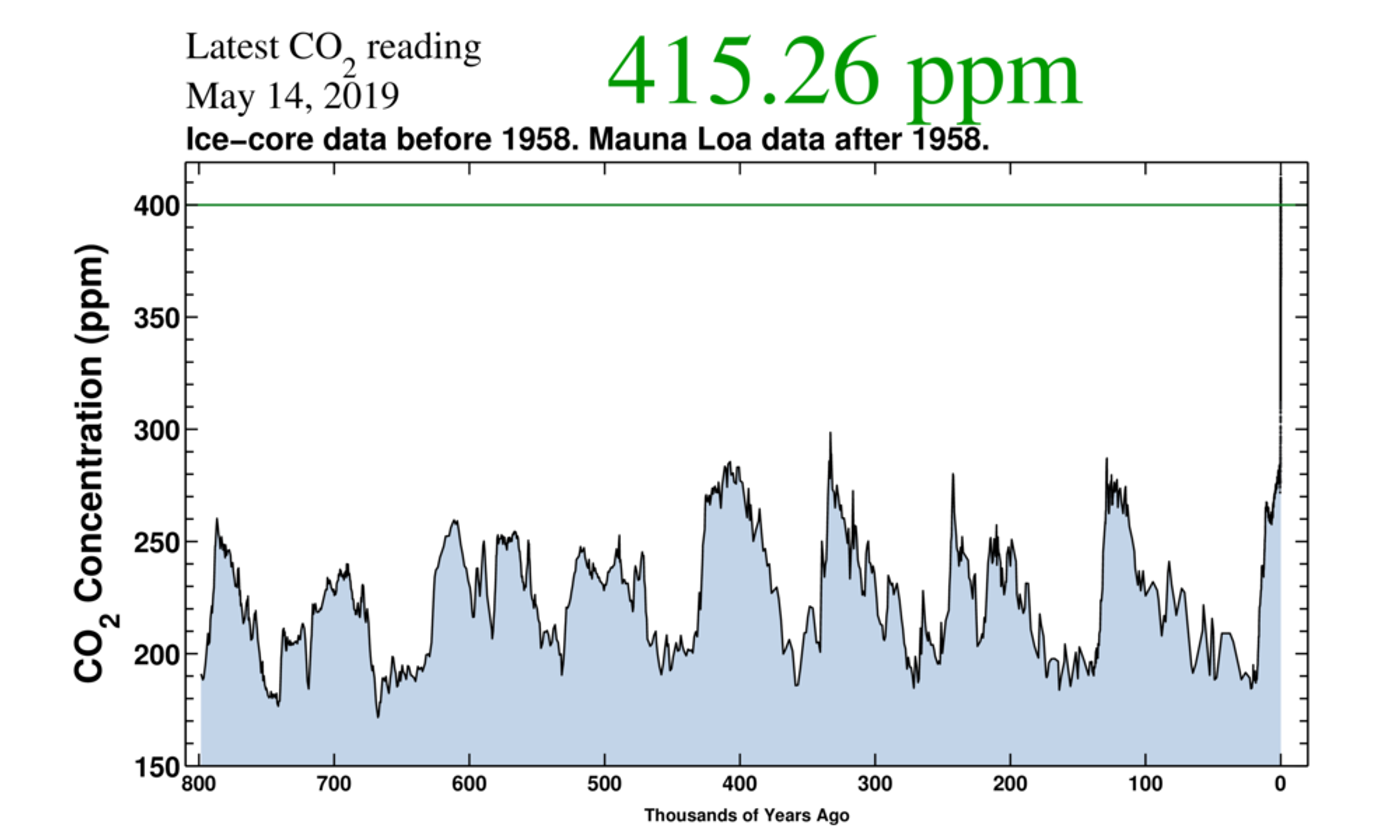Carbon Emissions Hit Record High...Again
Humans have set another historical record, but it’s not good news. Last Sunday, May 12, scientists from Scripps Institution of Oceanography (SIO) measured a record level of carbon dioxide in Earth’s atmosphere—415.26 parts per million.
In a statement from SIO, Ralph Keeling—the director of SIO’s CO2 program—commented “every year it goes up like this we should be saying ‘No, this shouldn’t be happening. It’s not normal.’ This increase is just not sustainable in terms of energy use and in terms of what we are doing to the planet.”
Ralph Keeling is the son of Charles David Keeling, the inventor of the measurement program known as the Keeling Curve. The Keeling Curve is considered the foundation of modern climate change research and is a daily record of atmospheric carbon dioxide. Upon joining SIO in 1956, geochemist Charles David Keeling invented a manometer and other equipment that could isolate and measure carbon dioxide in air samples. Continuous measurements are taken at the Mauna Loa Observatory in Hawaii. The first measurement from 1958 showed an average carbon dioxide measurement of 316.16 parts per million. In 2013 the carbon dioxide concentration surpassed 400 parts per million for the first time in human history.
Earth’s atmosphere has not contained this amount of carbon dioxide in more than three million years. In the span of human history, global warming and cooling events have occurred, but never at the rate and scale of what is happening now. Humans’ use of fossil fuels is one key contributor to these meteoric rises in atmospheric carbon levels. When humans burn fossil fuels for energy, the carbon dioxide that is released builds up in the atmosphere and act like a blanket that traps heat around the world, disrupting the climate.
Ralph Keeling also stated that “the average growth rate is remaining on the high end.” He attributes the rise in growth rate from 2.5 to 3 parts per million to the effects of possible El Niño conditions, in addition to fossil fuel use. El Niño conditions—technically known as El Niño Southern Oscillation Events—mean warmer ocean currents that impact precipitation and air temperatures globally. Humans cannot control events such as El Niños but reducing the amount of fossil fuels used and switching to renewable energy sources is vital to mitigating the growing threat a severe climate crisis.
Sources: PHYS, Keeling Curve Twitter, Keeling Curve Program









